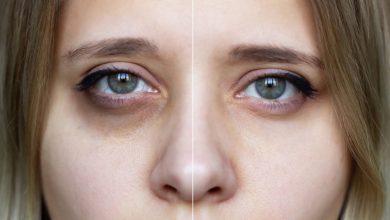DIY Baking Soda Shampoo: The Best Homemade Remedy for Hair Growth
Rinse your hair until every strand is wet, then turn off the water. Apply the shampoo, starting at the scalp and ending at the tips. The mixture will feel gritty and “goopy,” which is totally normal. It also won’t lather or foam like traditional shampoo because it doesn’t contain any soap. Work the mixture into your scalp, but don’t scrub too hard. The rough texture of baking soda can cause irritation if you’re not gentle. Let it sit for 1 to 3 minutes (indulge in a quick meditation sesh), then rinse out the shampoo with warm water.
4. Follow with an apple cider vinegar rinse.
If you’re going to try baking soda shampoo, be sure to finish with an apple cider vinegar rinse. Remember, baking soda has a very high pH, which opens the hair cuticle. “Apple cider vinegar will help seal the hair cuticle to defrizz hair and give it shine,” explains Denniston. “[It] will also rebalance the scalp’s pH after using baking soda, helping the scalp stay moisturized and protected.”
Like baking soda, however, apple cider vinegar may irritate some skin types. Don’t overdo the rinse, and only use it when you need a clarifying treatment.
5. Dry and style your hair as normal.
After your rinse, you can dry and style your tresses as usual. But if you have dry hair, you may want to take extra steps to reduce the risk of overdrying. Consider letting your hair air dry or using a blow dryer on a cool setting. Also, while the rinse is meant to lock in moisture, some people like to add a hydrating oil to their ends. Popular options include coconut, olive, and argan oil.
6. Find the frequency that works for you.
It will take time to figure out how baking soda shampoo fits into your hair care routine—if at all. If you have oily locks, a weekly treatment plus regular washing might do the trick. But if you have dry hair, it may work best as a replacement for normal shampooing a few days a month. Everyone is different.
Even then, your ideal frequency might vary as the seasons change. The same goes if you switch hair products or change your workout routine. What’s most important is that you pay attention to your individual hair and scalp needs.




